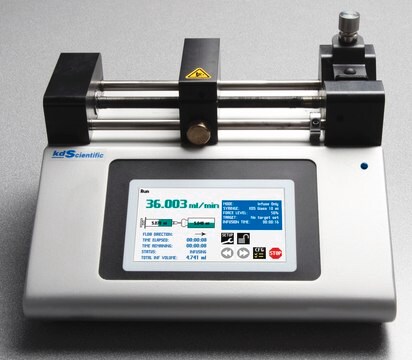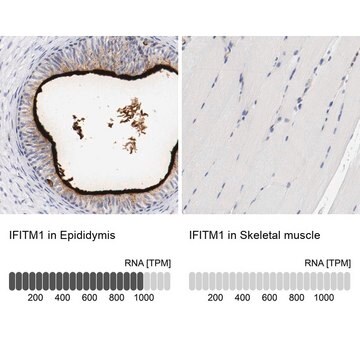MABE1125
Anti-BORIS/CTCFL Antibody, clone 4A7
clone 4A7, from human(Recombinant)
Synonim(y):
Transcriptional repressor CTCF, BORIS-like protein, Brother of the regulator of imprinted sites, Cancer/testis antigen 27, CTCF-like protein, CTCF paralog, HMG-1L1, Putative high mobility group protein 1-like 1, Putative high mobility group protein B1-li
About This Item
Polecane produkty
pochodzenie biologiczne
human (Recombinant)
Poziom jakości
forma przeciwciała
purified immunoglobulin
rodzaj przeciwciała
primary antibodies
klon
4A7, monoclonal
reaktywność gatunkowa
mouse, human
metody
ChIP: suitable
immunocytochemistry: suitable
immunohistochemistry: suitable
western blot: suitable
izotyp
IgMκ
numer dostępu NCBI
numer dostępu UniProt
Warunki transportu
wet ice
docelowa modyfikacja potranslacyjna
unmodified
informacje o genach
human ... CTCFL(140690)
Opis ogólny
Specyficzność
Immunogen
Zastosowanie
Epigenetics & Nuclear Function
Chromatin Biology
Western Blotting Analysis: A representative lot detected bacterially expressed Boris N-terminal recombinant fragment, as well as endogenous Boris in mouse embryonic fibroblasts, NIH/3T3, HEK293T, and human prostate cancer cell lines, including PC3, LNCaP, and DU145 (Cheema, Z., et al. (2014). Prostate. 74(2):164-176).
Immunocytochemistry Analysis: A representative lot detected a much greater Boris immunoreactivity among human prostate cancer cell lines than the benign prostatic hyperplasia (BPH) epithelial cell line BPH-1 by both flourescent and non-fluorescent immunocytochemistry (Cheema, Z., et al. (2014). Prostate. 74(2):164-176).
Chromatin Immunoprecipitation Analysis: A representative lot detected comparable Boris occupany as CTCF at the known CTCF-targeting site (CTS) around PIM-1, while a much weaker association of Boris with another CTS, the Igf2/H19 imprinting control region (H19 ICR) was observed using chromatin preparations from human LNCaP prostate cancer cells (Courtesy of Dr. E. Klenova, University of Essex, UK).
Immunohistochemistry Analysis: A representative lot detected Boris immunoreactivity among frozen sections of prostate tumours, but not benign prostatic hyperplasia (BPH) tissues (Cheema, Z., et al. (2014). Prostate. 74(2):164-176).
Jakość
Western Blotting Analysis: 0.5 µg/mL of this antibody detected BORIS/CTCFL in 10 µg of MCF7 cell lysate.
Opis wartości docelowych
Postać fizyczna
Przechowywanie i stabilność
Inne uwagi
Oświadczenie o zrzeczeniu się odpowiedzialności
Nie możesz znaleźć właściwego produktu?
Wypróbuj nasz Narzędzie selektora produktów.
Kod klasy składowania
12 - Non Combustible Liquids
Klasa zagrożenia wodnego (WGK)
WGK 1
Temperatura zapłonu (°F)
Not applicable
Temperatura zapłonu (°C)
Not applicable
Certyfikaty analizy (CoA)
Poszukaj Certyfikaty analizy (CoA), wpisując numer partii/serii produktów. Numery serii i partii można znaleźć na etykiecie produktu po słowach „seria” lub „partia”.
Masz już ten produkt?
Dokumenty związane z niedawno zakupionymi produktami zostały zamieszczone w Bibliotece dokumentów.
Nasz zespół naukowców ma doświadczenie we wszystkich obszarach badań, w tym w naukach przyrodniczych, materiałoznawstwie, syntezie chemicznej, chromatografii, analityce i wielu innych dziedzinach.
Skontaktuj się z zespołem ds. pomocy technicznej








